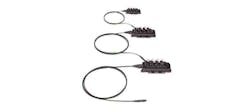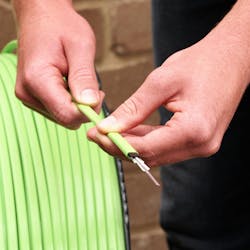Fiber Indexing uses connectorized cables and terminals, which allow installers to use a cookie-cutter approach to build out a network. The components are "daisy-chained" together, which limits the need for custom cable assemblies or splicing. The basic building block, which is repeated throughout the service area, includes a terminal with a built-in splitter, hardened 12-fiber inputs and outputs, and eight hardened drops to the homes.
As one Diamonds judge says, this "promises to speed up and greatly reduce termination costs in fiber deployments through the use of hardened preconnectorized terminations."
Indexing begins with a 12-fiber cable entering the first terminal. This fiber is routed to a splitter for servicing a local customer while the remaining fibers are indexed or moved up as they exit the terminal to connect to the next terminal. Indexing means that the second fiber entering the terminal will exist as the first fiber to enter the next terminal.
It uses Rapid Fiber cable spool technology to eliminate the need to store excess fiber. Any amount of fiber cable can be pulled from the spool back to the previous terminal without the need to cut specific lengths. Remaining cable is left on the spool.






